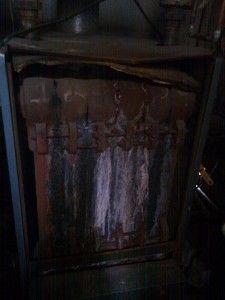I received an email the other day from an interesting company, Organica, that creates biological processes for treating wastewater. I like the idea of rethinking our assumptions to things like wastewater treatment – recycling need not be limited to paper and cans, but can capture multiple consumables that we use in housing…sustainableschmidt
Organica’s Approach
by sustainableemily, Organica
Humans waste large amounts of water, and current projections of population and economic growth imply that in 2030 global water requirements will be 40% greater than current supply. Our population is growing by 50 million people per year, and it continues to migrate into cities. Freshwater consumption has more than doubled since World War II. All of this means our lifestyle, which is completely dependent on freshwater consumption, is not sustainable.
But, there is good news: Water can be recycled and reused. Organica Technologies has a solution for recycling and reusing wastewater on a scale that is efficient, sustainable and cost effective.
Organica wastewater treatment plants combine the latest developments in ecological engineering with traditional wastewater treatment technology, offering communities and corporations around the world a low-cost and efficient method to treat wastewater to reuse quality.
Organica treatment plants purify water by harnessing the metabolic processes of living organisms that digest organic pollutants. In addition to the bacteria found in traditional activated sludge systems, Organica treatment plants are populated by 2,000 to 3,000 species of plants, animals, and microbes. The organisms work together to maximize biological degradation of contaminants. The ecosystems provide a high degree of biodiversity, thus resulting in a very stable and resilient system. The treatment plants use of natural organisms, applied human intelligence, innovative bio-nano, and information technologies helps nature accelerate the purification of waste water, freeing it for reuse in non-potable applications; irrigation, cooling tower makeup and flushing.
Additionally, this compact and odorless design fits in tight spaces within urban environments. This decreases the need for expensive pipes bringing the water back and forth. More importantly, it allows for the water to be reused directly on site for irrigation, toilet water, cooling towers, and all other needs depending on specifications. It also saves costs, in addition to all the above benefits. Fitting in small areas of land reduces capital costs, and the operational expenses are much lower than all other options.
Wastewater management has remained relatively stagnant for the past 80 years. Now, Organica’s approach is changing the game. In order to create a sustainable world, we must secure and allocate water supplies with a growing population and decreased water levels. Organica provides the solution.
Organica helps nature do its job, just better and faster.
Connect with Organica:
On Twitter
On Facebook
{ 0 comments }


